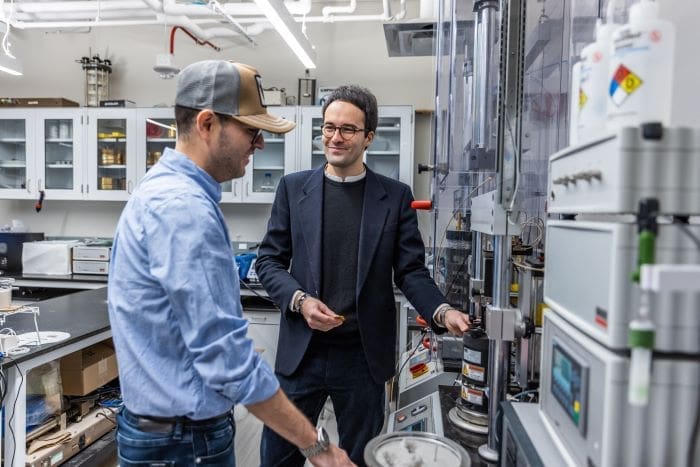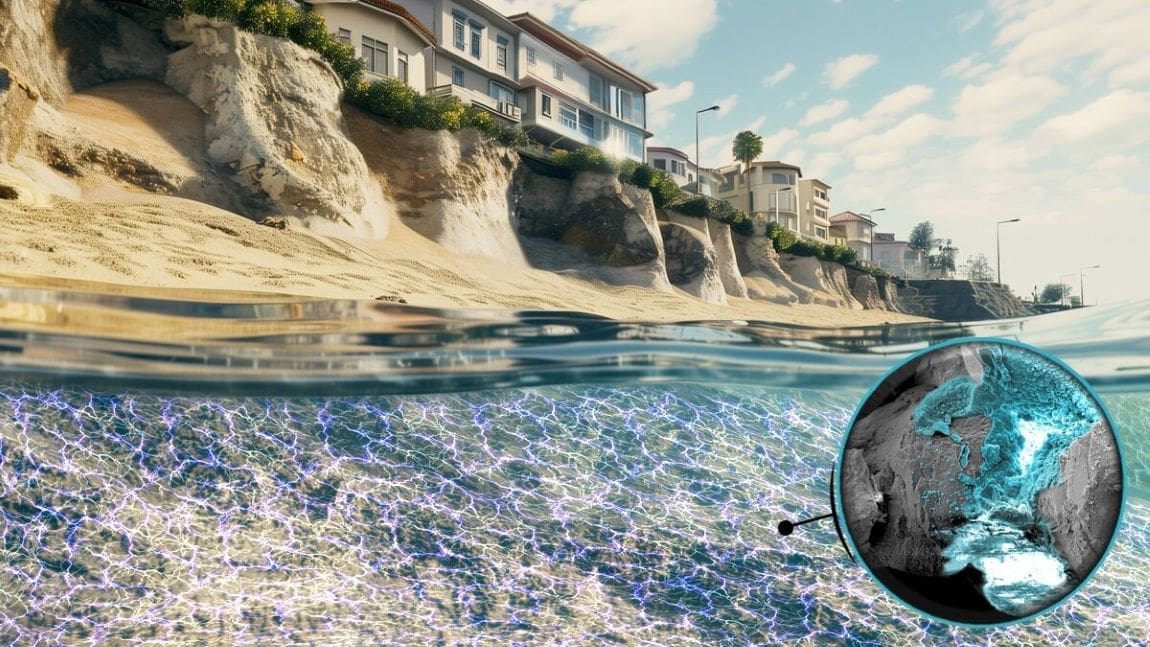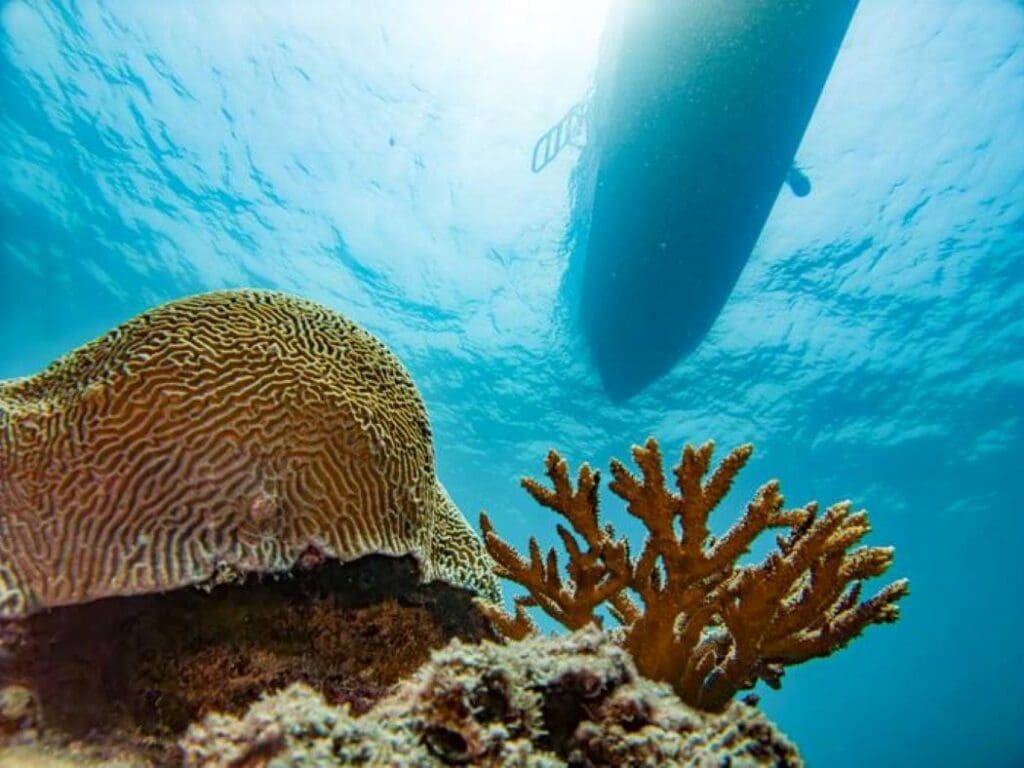In a new study, researchers from Northwestern University have introduced a novel method to combat coastal erosion using electricity, drawing inspiration from nature. As climate change intensifies and sea levels rise, the erosion of coastlines has become an urgent global issue, threatening communities and causing billions of dollars in damage annually. The new method offers a promising alternative to traditional, costly, and often temporary solutions like sea walls.
The innovative process, detailed in the journal Communications Earth and the Environment, involves applying a mild electrical current to marine sand. This current stimulates a chemical reaction that binds sand particles together, effectively turning them into a solid, rock-like structure. This transformation mimics the natural process used by mollusks, such as clams and mussels, which use minerals dissolved in seawater to build their shells.

Dr. Alessandro Rotta Loria, the study’s lead researcher, explained the inspiration behind the approach: “Over 40% of the world’s population lives in coastal areas. Because of climate change and sea-level rise, erosion is an enormous threat to these communities. Current approaches to mitigate erosion involve building protection structures or injecting external binders into the subsurface.”
He added: “My aim was to develop an approach capable of changing the status quo in coastal protection – one that didn’t require the construction of protection structures and could cement marine substrates without using actual cement.”
The new method works by applying a mild electrical charge to marine soils in seawater, which triggers the formation of calcium carbonate and other minerals that act as a natural cement. This cement binds the sand grains together, forming a durable, immovable structure that can withstand the forces of erosion. Laboratory experiments have shown that this process works with various types of sand and can create structures as strong as, or even stronger than, traditional sea walls.
One of the most significant advantages of this method is its environmental sustainability. Unlike conventional approaches that rely on external binders or high-pressure injections, this process uses naturally occurring minerals in seawater and requires minimal energy. Additionally, the method is fully reversible – by switching the polarity of the electrical current, the cemented sand can be dissolved, allowing for flexibility in coastal management.
Cost-effectiveness is another key benefit. The research team estimates that the process costs between $3 to $6 per cubic meter of electrically cemented ground, a fraction of the $70 per cubic meter cost of traditional methods. This affordability, combined with its potential to last for decades without further intervention, makes the approach an attractive option for communities worldwide.
“The applications of this approach are countless,” Rotta Loria said. “We can use it to strengthen the seabed beneath sea walls or stabilize sand dunes and retain unstable soil slopes. We could also use it to strengthen protection structures, marine foundations and so many other things. There are many ways to apply this to protect coastal areas.”
Dr. Rotta Loria and his team are now planning to test this method outside the laboratory, on actual beaches, to assess its effectiveness in real-world conditions. If successful, this bioinspired approach could revolutionize coastal protection, offering a sustainable, long-lasting solution to one of the most pressing environmental challenges of our time.
Journal Reference:
Landivar Macias, A., Jacobsen, S.D. & Rotta Loria, A.F. ‘Electrodeposition of calcareous cement from seawater in marine silica sands’, Communications Earth & Environment 5, 442 (2024). DOI: 10.1038/s43247-024-01604-3
Article Source:
Press Release/Material by Northwestern University
Featured image: An artistic illustration of how electricity can strength the sand along ocean coastlines. The inset shows a microscopy image of a “natural cement” (in blue) formed among grains of sand. Credit: Northwestern University




